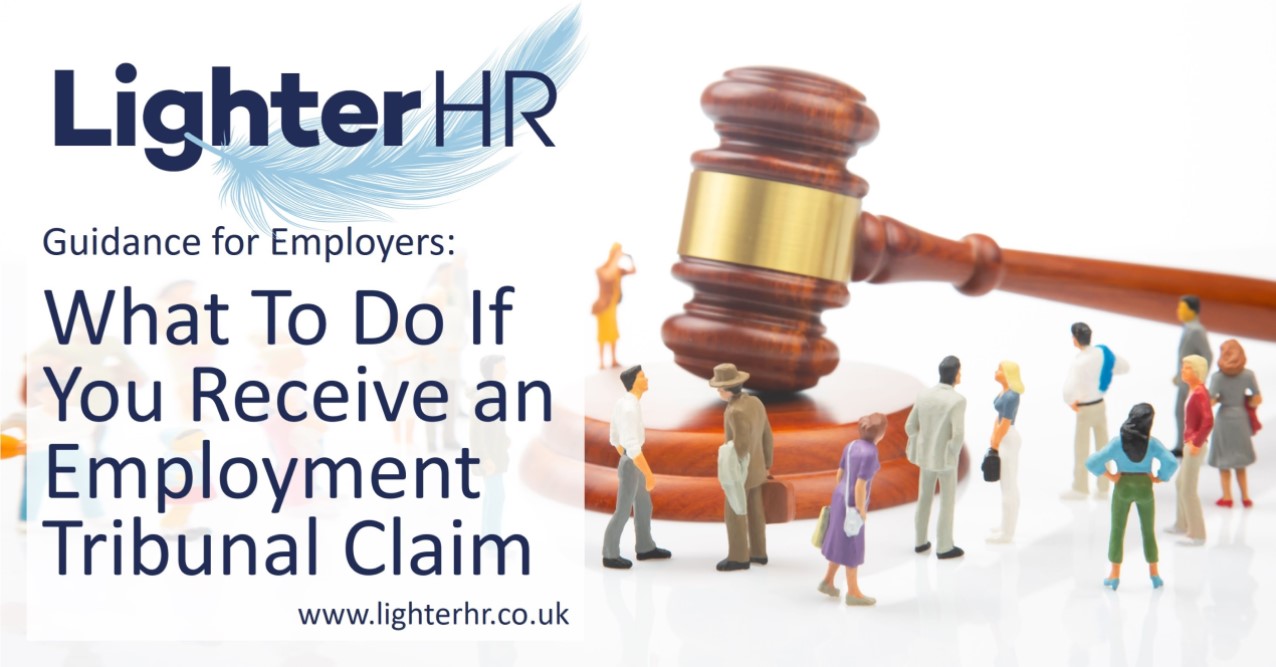At some point it’s possible that a dreaded Employment Tribunal claim form will land on your desk. It could be something that you’d been expecting following an ongoing employee issue or a particularly acrimonious departure. Alternatively, it could catch you completely off guard. Either way, it’s useful to know what you need to do if you find yourself in this situation.
Time to read out post: 5 minutes
The topics covered in this post are:
1. Early Warning – Acas Early Conciliation
The first thing that should happen if an employee decides to bring an Employment Tribunal claim is that they go through the Acas Early Conciliation process. The process is that the employee has to raise their complaint to Acas in the first instance. Acas should then contact you and see if there’s a way for the issues to be resolved rather than progressing to a full Employment Tribunal hearing.
You’ll be contacted by the Acas mediator either by phone or in writing. They’ll explain to you the issues that the employee is raising. If possible, they will also give you an indication of what it would take to settle with the employee. It can be a very useful process and we strongly recommend that you engage if you can. Acas mediators can be excellent at managing employee’s expectations regarding the strength and value of their potential claim. You don’t have to reach agreement. However, it’s certainly in everyone’s best interests to avoid an Employment Tribunal if you can.
If you are unable to reach an agreement with the employee through early conciliation then the process will end. The employee will be issued with a certificate number which they need before they can submit their claim. You should remember that, even if early conciliation isn’t successful, you can continue to try to reach a settlement with the employee all the way up to and even during the hearing.
You can find out more about the early conciliation process on the Acas website.
2. Receiving an Employment Tribunal Claim – ET1
An ET1 is the form that employees use to submit their claim. With early conciliation, it shouldn’t be a surprise when you receive an ET1. However, seeing the claim in writing and knowing that it’s now officially in the process is never going to be the highlight to of your day!
The document is very formal looking and it could (and most likely will) be the first time you’ve seen your company name sited in legal proceedings.
Our first tip is to stay calm! Have your rant and then focus on assessing the options open to you.
3. Submitting a Response to an Employment Tribunal Claim – ET3
Regardless of whether you want to fight the case all the way to a hearing or you’d rather reach a settlement, our advice is always to submit a response to the ET1.
If you fail to do this and then aren’t able to reach an agreement with the employee, you make winning your case almost impossible. This is because the tribunal service will reach a decision based only on the information provided by the employee.
Submit all responses using the ET3 form, available for completion online. Have a professional review your response (we can assist with this). They will know all of the potential issues. They will also be able to guide you through the best way to structure your response.
4. Should You Fight a Tribunal Case or Not?
Having submitted the response you need to determine whether you actually want to fight the case or whether you’d rather reach a settlement. It may be that you didn’t reach a settlement through early conciliation but there’s nothing to stop you trying again.
When deciding on the best route for your business you need to consider:
Financial Cost
When managing these situations for clients, we tell them to expect the cost to be around £7,500 to fight an average case. A very complex case will cost more than this.
Time Cost
There’s no way around it, fighting an employment tribunal claim is time consuming. It can also be very distracting. Even if you hand the case over to a third party, you’re still going to need to provide information and attend meetings and hearings.
You Might Lose
You may think you have a really strong case but you can never be certain which way a case will go. However, it’s important to be realistic and acknowledge that you may lose. Losing will cost you both in terms of the award the employee is given and damage to your company’s reputation.
5. Why Would You Not Just Settle an Employment Tribunal Claim?
Generally, employers will make a commercial decision regarding whether or not to defend a case all the way to a hearing. There’s no easy answer here. If an employee is looking for less than defending the case will cost you, it’s very tempting to just settle. This makes commercial sense. However, you need to be careful of a few aspects.
Setting a Precedent
Many clients choose to fight cases to ensure that they send a clear message that they won’t be held to ransom by employees who bring vexatious claims. Many clients are happy to enter into settlement negotiations when they feel that they have done something wrong. However, they choose to defend cases which they feel are not justified.
Reputational Damage
No employer wants to have a reputation in the market of being an unscrupulous employer who treats employees badly and then pays them to go away. They see the money spent on fighting the case as being money spent on protecting their brand.
It is worth remembering that Employment Tribunals are open to the public and decisions are published online. This can be both a good and bad thing. If you’re accused of discrimination and it’s found that this accusation is without merit then this will be in the public domain. However, the reverse is also true. Of course, you may have no choice but to defend the claim if you really can’t find a way to settle with the employee ahead of the hearing.
Deciding whether or not to defend an Employment Tribunal is never an easy decision. If you find yourself facing a claim then we suggest you seek some professional guidance to help you decide on the best way forward.
6. What Next?
If you decide to reach a settlement…
You can use Acas to help you reach a settlement with the employee or you can liaise with the employee directly.
We would advocate using Acas as they can provide an independent view point to help ensure that both parties feel the outcome is as it should be. They will also add a degree of formality to the process and ensure that the claim is actually withdrawn.
If you decide to fight the case…
It’s best to seek professional advice as there are be a number of steps that could happen and different claims take different routes.

Need support responding to an Employment Tribunal claim?


